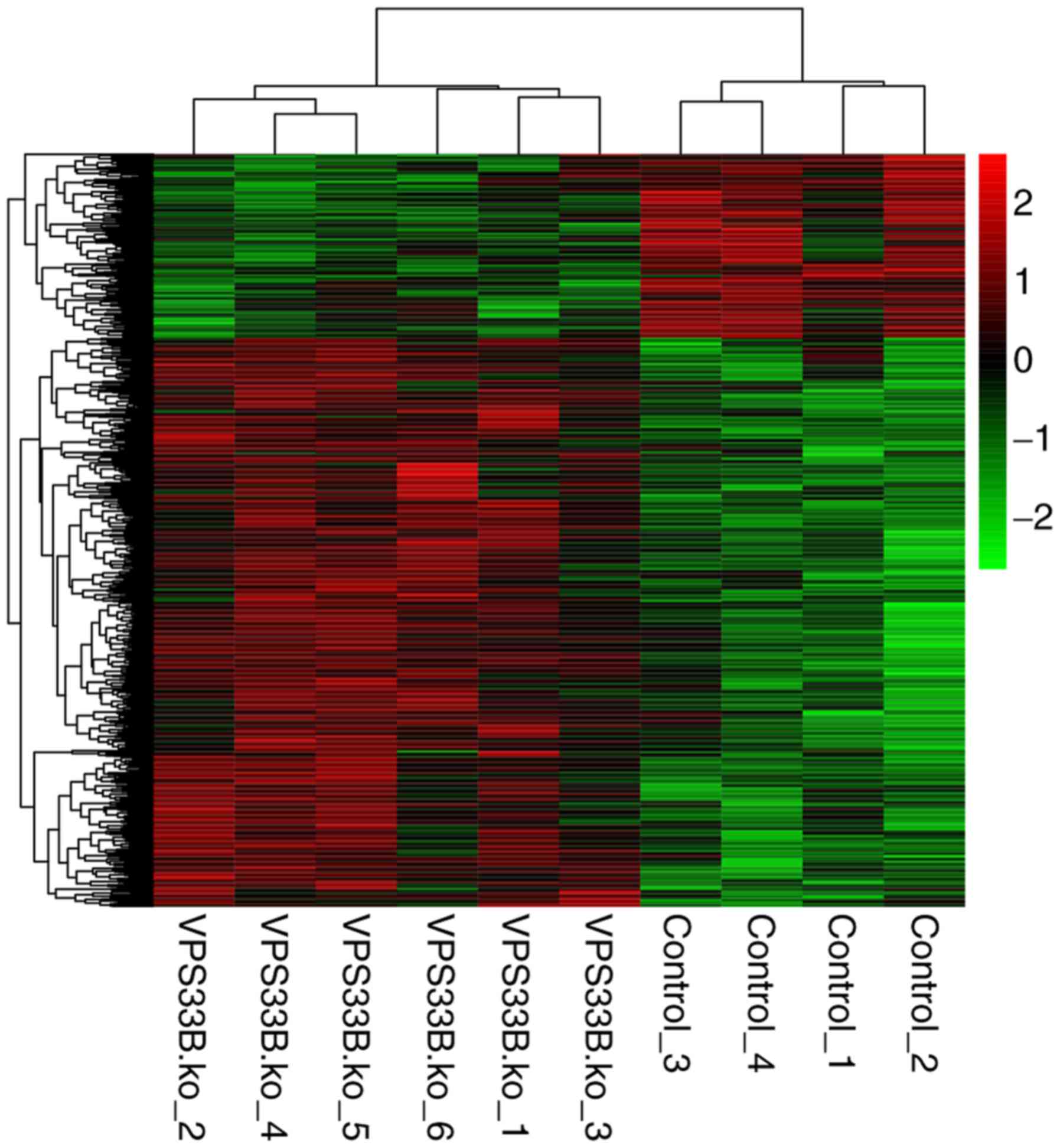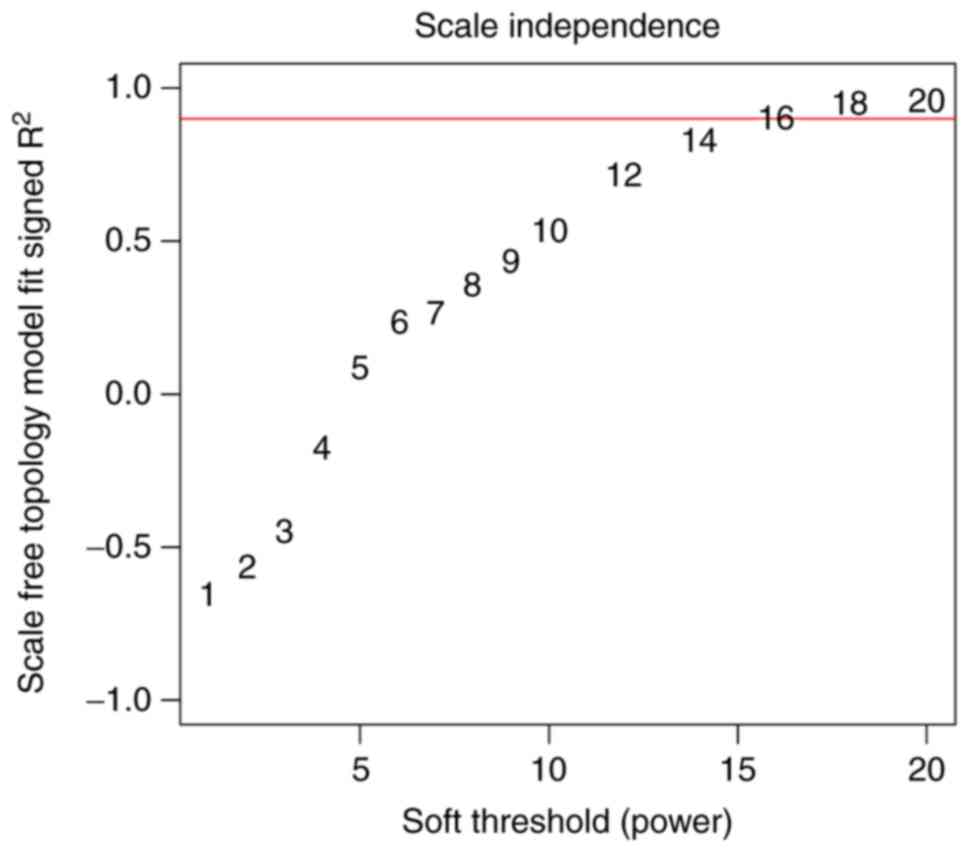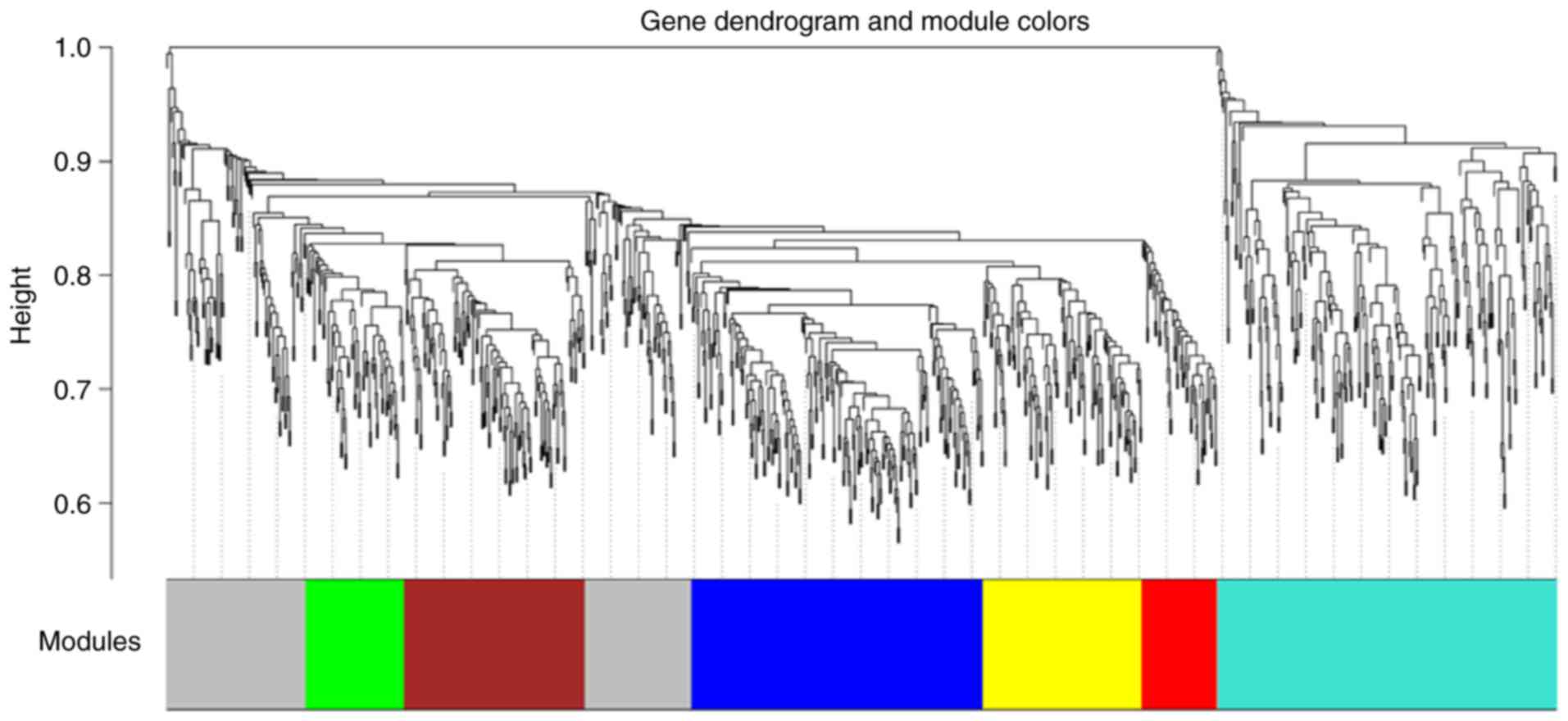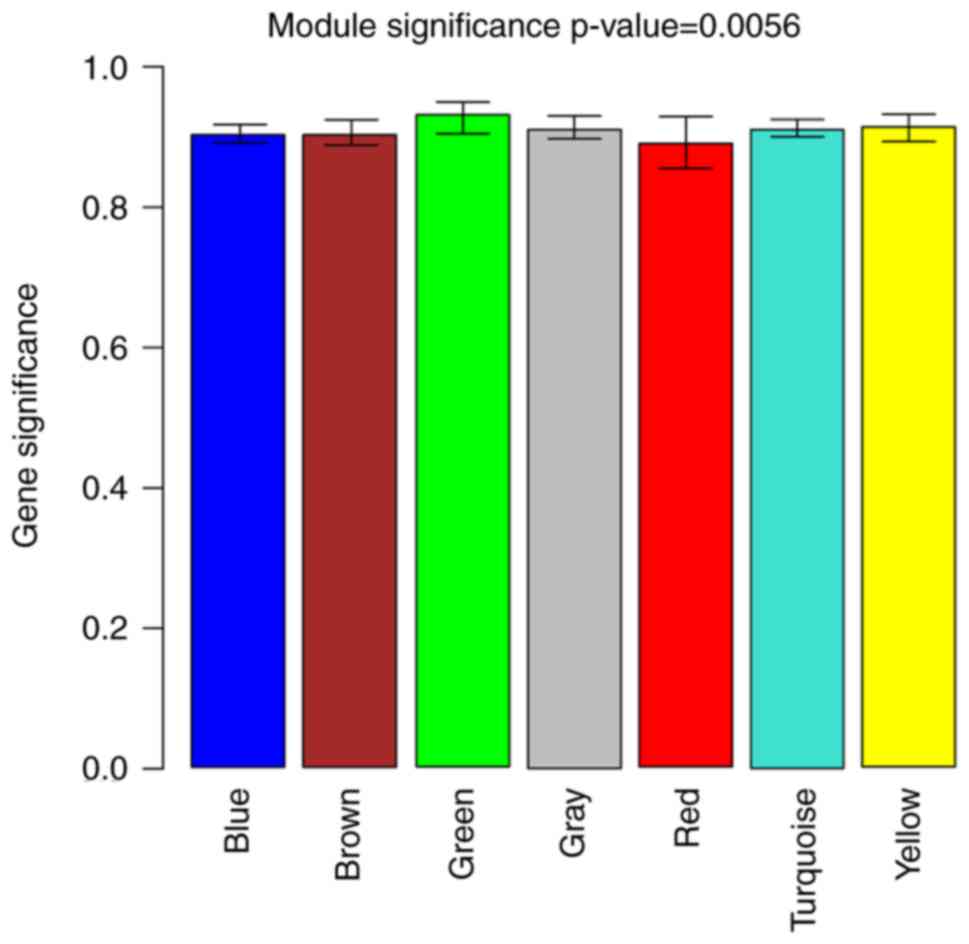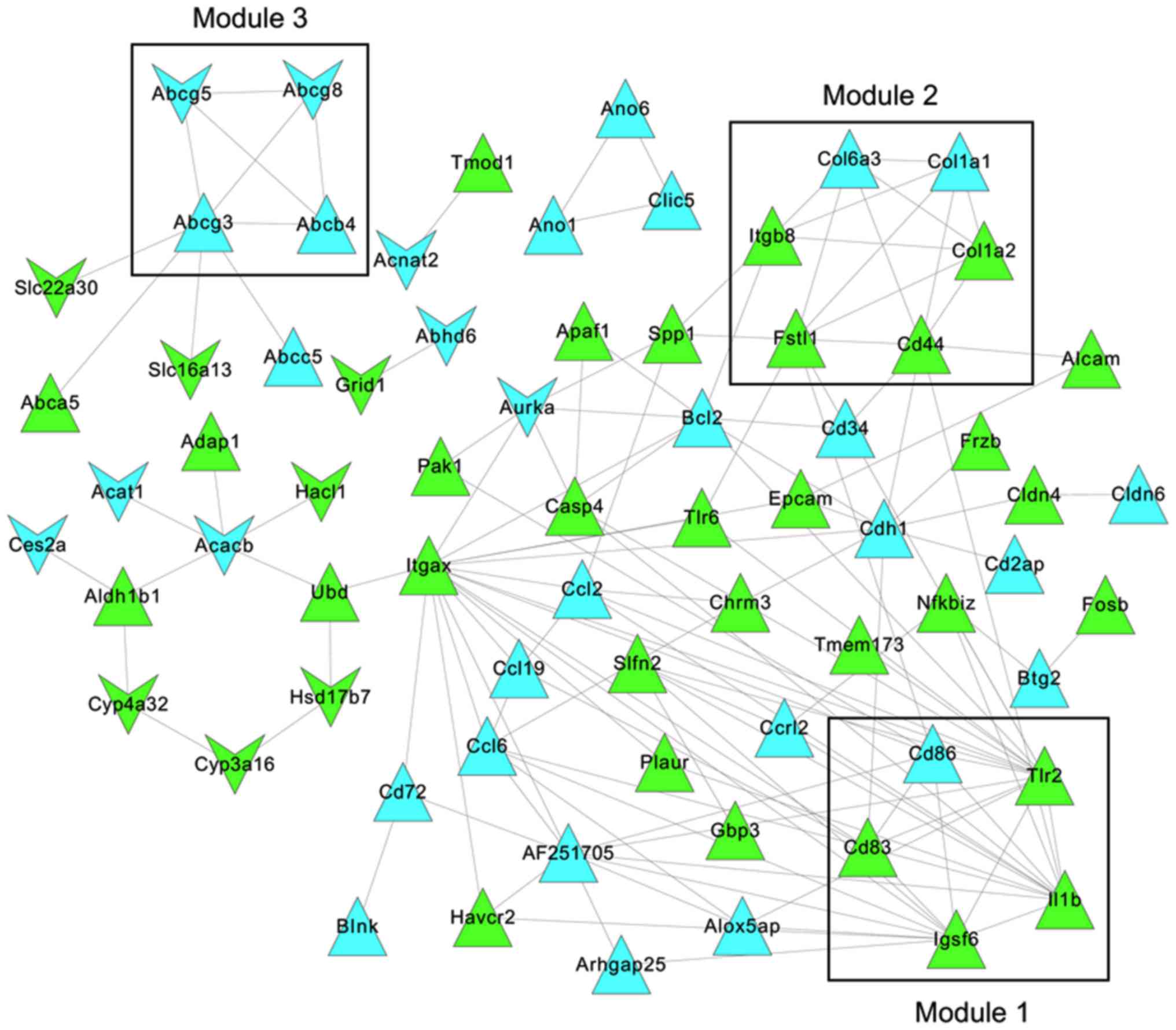|
1
|
Cullinane AR, Straatman-Iwanowska A,
Zaucker A, Wakabayashi Y, Bruce CK, Luo G, Rahman F, Gürakan F,
Utine E, Ozkan TB, et al: Mutations in VIPAR cause an
arthrogryposis, renal dysfunction and cholestasis syndrome
phenotype with defects in epithelial polarization. Nat Genet.
42:303–312. 2010. View
Article : Google Scholar : PubMed/NCBI
|
|
2
|
Zhou Y and Zhang J: Arthrogryposis-renal
dysfunction-cholestasis (ARC) syndrome: From molecular genetics to
clinical features. Ital J Pediatr. 40:772014. View Article : Google Scholar : PubMed/NCBI
|
|
3
|
Gissen P, Tee L, Johnson CA, Genin E,
Caliebe A, Chitayat D, Clericuzio C, Denecke J, Di Rocco M,
Fischler B, et al: Clinical and molecular genetic features of ARC
syndrome. Hum Genet. 120:396–409. 2006. View Article : Google Scholar : PubMed/NCBI
|
|
4
|
Elmeery A, Lanka K and Cummings J: ARC
syndrome in preterm baby. J Perinatol. 33:821–822. 2013. View Article : Google Scholar : PubMed/NCBI
|
|
5
|
Eastham KM, McKiernan PJ, Milford DV,
Ramani P, Wyllie J, van't Hoff W, Lynch SA and Morris AA: ARC
syndrome: An expanding range of phenotypes. Arch Dis Child.
85:415–420. 2001. View Article : Google Scholar : PubMed/NCBI
|
|
6
|
Cullinane AR, Straatman-Iwanowska A, Seo
JK, Ko JS, Song KS, Gizewska M, Gruszfeld D, Gliwicz D, Tuysuz B,
Erdemir G, et al: Molecular investigations to improve diagnostic
accuracy in patients with ARC syndrome. Hum Mutat. 30:E330–E337.
2009. View Article : Google Scholar :
|
|
7
|
Carim L, Sumoy L, Andreu N, Estivill X and
Escarceller M: Cloning, mapping and expression analysis of VPS33B,
the human orthologue of rat Vps33b. Cytogenet Cell Genet. 89:92–95.
2000. View Article : Google Scholar : PubMed/NCBI
|
|
8
|
Matthews RP, Plumb-Rudewiez N, Lorent K,
Gissen P, Johnson CA, Lemaigre F and Pack M: Zebrafish vps33b, an
ortholog of the gene responsible for human arthrogryposis-renal
dysfunction-cholestasis syndrome, regulates biliary development
downstream of the onecut transcription factor hnf6. Development.
132:5295–5306. 2005. View Article : Google Scholar : PubMed/NCBI
|
|
9
|
Peterson M and Emr SD: The class C Vps
complex functions at multiple stages of the vacuolar transport
pathway. Traffic. 2:476–486. 2001. View Article : Google Scholar : PubMed/NCBI
|
|
10
|
Hershkovitz D, Mandel H, Ishida-Yamamoto
A, Chefetz I, Hino B, Luder A, Indelman M, Bergman R and Sprecher
E: Defective lamellar granule secretion in arthrogryposis, renal
dysfunction, and cholestasis syndrome caused by a mutation in
VPS33B. Arch Dermatol. 144:334–340. 2008. View Article : Google Scholar : PubMed/NCBI
|
|
11
|
Bem D, Smith H, Banushi B, Burden JJ,
White IJ, Hanley J, Jeremiah N, Rieux-Laucat F, Bettels R, Ariceta
G, et al: VPS33B regulates protein sorting into and maturation of
α-granule progenitor organelles in mouse megakaryocytes. Blood.
126:133–143. 2015. View Article : Google Scholar : PubMed/NCBI
|
|
12
|
Banushi B, Forneris F, Straatman-Iwanowska
A, Strange A, Lyne AM, Rogerson C, Burden JJ, Heywood WE, Hanley J,
Doykov I, et al: Regulation of post-Golgi LH3 trafficking is
essential for collagen homeostasis. Nature Communications.
7:121112016. View Article : Google Scholar : PubMed/NCBI
|
|
13
|
Hanley J, Dhar DK, Mazzacuva F, Fiadeiro
R, Burden JJ, Lyne AM, Smith H, Straatman-Iwanowska A, Banushi B,
Virasami A, et al: Vps33b is crucial for structural and functional
hepatocyte polarity. J Hepatol. 66:1001–1011. 2017. View Article : Google Scholar : PubMed/NCBI
|
|
14
|
Troyanskaya O, Cantor M, Sherlock G, Brown
P, Hastie T, Tibshirani R, Botstein D and Altman RB: Missing value
estimation methods for DNA microarrays. Bioinformatics. 17:520–525.
2001. View Article : Google Scholar : PubMed/NCBI
|
|
15
|
Hubbell E, Liu WM and Mei R: Robust
estimators for expression analysis. Bioinformatics. 18:1585–1592.
2002. View Article : Google Scholar : PubMed/NCBI
|
|
16
|
Rao Y, Lee Y, Jarjoura D, Ruppert AS, Liu
CG, Hsu JC and Hagan JP: A comparison of normalization techniques
for microRNA microarray data. Stat Appl Genet Mol Biol.
7:Article22. 2008. View Article : Google Scholar : PubMed/NCBI
|
|
17
|
Smyth GK: Limma: Linear models for
microarray data. Bioinformatics and computational biology solutions
using R and Bioconductor Springer. 397–420. 2005. View Article : Google Scholar
|
|
18
|
Benjamini Y and Hochberg Y: Controlling
the false discovery rate: A practical and powerful approach to
multiple testing. J R Statist Soc B. 57:289–300. 1995.
|
|
19
|
Wang L, Cao C, Ma Q, Zeng Q, Wang H, Cheng
Z, Zhu G, Qi J, Ma H, Nian H and Wang Y: RNA-seq analyses of
multiple meristems of soybean: Novel and alternative transcripts,
evolutionary and functional implications. BMC Plant Biol.
14:1692014. View Article : Google Scholar : PubMed/NCBI
|
|
20
|
Langfelder P and Horvath S: WGCNA: An R
package for weighted correlation network analysis. BMC
Bioinformatics. 9:5592008. View Article : Google Scholar : PubMed/NCBI
|
|
21
|
Ravasz E, Somera AL, Mongru DA, Oltvai ZN
and Barabási AL: Hierarchical organization of modularity in
metabolic networks. Science. 297:1551–1555. 2002. View Article : Google Scholar : PubMed/NCBI
|
|
22
|
Franceschini A, Szklarczyk D, Frankild S,
Kuhn M, Simonovic M, Roth A, Lin J, Minguez P, Bork P, von Mering C
and Jensen LJ: STRING v9.1: Protein-protein interaction networks,
with increased coverage and integration. Nucleic Acids Res.
41(Database Issue): D808–D815. 2013. View Article : Google Scholar :
|
|
23
|
Shannon P, Markiel A, Ozier O, Baliga NS,
Wang JT, Ramage D, Amin N, Schwikowski B and Ideker T: Cytoscape: A
software environment for integrated models of biomolecular
interaction networks. Genome Res. 13:2498–2504. 2003. View Article : Google Scholar : PubMed/NCBI
|
|
24
|
Bader GD and Hogue CW: An automated method
for finding molecular complexes in large protein interaction
networks. BMC Bioinformatics. 4:22003. View Article : Google Scholar : PubMed/NCBI
|
|
25
|
Maere S, Heymans K and Kuiper M: BiNGO: A
Cytoscape plugin to assess overrepresentation of gene ontology
categories in biological networks. Bioinformatics. 21:3448–3449.
2005. View Article : Google Scholar : PubMed/NCBI
|
|
26
|
Beissbarth T and Speed TP: GOstat: Find
statistically over-represented Gene Ontologies within a group of
genes. Bioinformatics. 20:1464–1465. 2004. View Article : Google Scholar : PubMed/NCBI
|
|
27
|
Wu J, Mao X, Cai T, Luo J and Wei L: KOBAS
server: A web-based platform for automated annotation and pathway
identification. Nucleic Acids Res. 34(Web Server Issue): W720–W724.
2006. View Article : Google Scholar : PubMed/NCBI
|
|
28
|
Cheng J, Yang L, Kumar V and Agarwal P:
Systematic evaluation of connectivity map for disease indications.
Genome Med. 6:5402014. View Article : Google Scholar
|
|
29
|
Beutler B: Inferences, questions and
possibilities in Toll-like receptor signalling. Nature.
430:257–263. 2004. View Article : Google Scholar : PubMed/NCBI
|
|
30
|
Husebye H, Aune MH, Stenvik J, Samstad E,
Skjeldal F, Halaas O, Nilsen NJ, Stenmark H, Latz E, Lien E, et al:
The Rab11a GTPase controls Toll-like receptor 4-induced activation
of interferon regulatory factor-3 on phagosomes. Immunity.
33:583–596. 2010. View Article : Google Scholar : PubMed/NCBI
|
|
31
|
Sjoelund V, Smelkinson M and Nita-Lazar A:
Phosphoproteome profiling of the macrophage response to different
toll-like receptor ligands identifies differences in global
phosphorylation dynamics. J Proteome Res. 13:5185–5197. 2014.
View Article : Google Scholar : PubMed/NCBI
|
|
32
|
Yu S, Nie Y, Knowles B, Sakamori R,
Stypulkowski E, Patel C, Das S, Douard V, Ferraris RP, Bonder EM,
et al: TLR sorting by Rab11 endosomes maintains intestinal
epithelial-microbial homeostasis. EMBO J. 33:1882–1895. 2014.
View Article : Google Scholar : PubMed/NCBI
|
|
33
|
Gissen P, Johnson CA, Morgan NV,
Stapelbroek JM, Forshew T, Cooper WN, McKiernan PJ, Klomp LW,
Morris AA, Wraith JE, et al: Mutations in VPS33B, encoding a
regulator of SNARE-dependent membrane fusion, cause
arthrogryposis-renal dysfunction-cholestasis (ARC) syndrome. Nat
Genet. 36:400–404. 2004. View
Article : Google Scholar : PubMed/NCBI
|
|
34
|
Skalski M and Coppolino MG: SNARE-mediated
trafficking of alpha5beta1 integrin is required for spreading in
CHO cells. Biochem Biophys Res Commun. 335:1199–1210. 2005.
View Article : Google Scholar : PubMed/NCBI
|
|
35
|
Tayeb MA, Skalski M, Cha MC, Kean MJ,
Scaife M and Coppolino MG: Inhibition of SNARE-mediated membrane
traffic impairs cell migration. Exp Cell Res. 305:63–73. 2005.
View Article : Google Scholar : PubMed/NCBI
|
|
36
|
Rapaport D, Lugassy Y, Sprecher E and
Horowitz M: Loss of SNAP29 impairs endocytic recycling and cell
motility. PLoS One. 5:e97592010. View Article : Google Scholar : PubMed/NCBI
|
|
37
|
Wakabayashi Y, Dutt P, Lippincott-Schwartz
J and Arias IM: Rab11a and myosin Vb are required for bile
canalicular formation in WIF-B9 cells. Proc Natl Acad Sci USA.
102:15087–15092. 2005. View Article : Google Scholar : PubMed/NCBI
|
|
38
|
Berge KE, Tian H, Graf GA, Yu L, Grishin
NV, Schultz J, Kwiterovich P, Shan B, Barnes R and Hobbs HH:
Accumulation of dietary cholesterol in sitosterolemia caused by
mutations in adjacent ABC transporters. Science. 290:1771–1775.
2000. View Article : Google Scholar : PubMed/NCBI
|
|
39
|
Strautnieks SS, Bull LN, Knisely AS,
Kocoshis SA, Dahl N, Arnell H, Sokal E, Dahan K, Childs S, Ling V,
et al: A gene encoding a liver-specific ABC transporter is mutated
in progressive familial intrahepatic cholestasis. Nature genetics.
20:233–238. 1998. View
Article : Google Scholar : PubMed/NCBI
|



